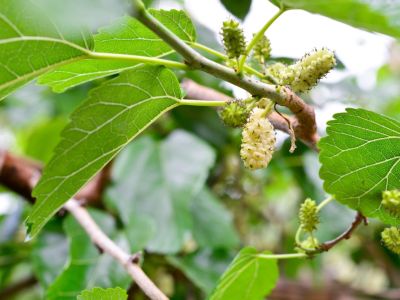Contorted Mulberry Info
The leaves of this attractive tree are a light green color, somewhat glossy, and heart-shaped. They turn yellow in the fall. From mid to late summer, small yellow flowers bloom followed by fruit similar in shape and size to a blackberry. Fruit is white and ripens to a pink or light violet. Depending on variety, it can take up to ten years for a tree to start producing fruit. A distinguishing feature of this interesting tree is the contorted or twisted branches that are often used in flower arrangements, which help to give these plants the name ‘corkscrew mulberries.’
Growing Contorted Unryu Mulberries
Many people plant contorted mulberries as an ornamental plant in the home landscape. They bring great interest during all garden seasons and draw wildlife with their fruit and foliage. Mulberry trees do best in full to part sun and require ample water while they are establishing, although they are drought tolerant once roots are established. Some people plant varieties in large containers where their growth can be controlled. They make lovely patio plants and are popular because of their fast growth.
Care of Contorted Mulberry
Mulberry trees need space to spread out, 15 feet (4.5 m.) between trees is recommended. Provide supplemental water during dry conditions. If the soil conditions become too dry, fruit drop will occur. An annual feeding using a 10-10-10 fertilizer will keep the tree at its best. Pruning is only necessary to remove dead or damaged limbs and to limit crowding and control growth.
Harvesting and Using Fruit
Pick fruit early in the morning when it is at the peak of ripeness. It will be deep red to almost black when it is ready. Spread a sheet on the ground and gently shake the tree. The fruit will fall to the ground. Use immediately or wash, dry, and freeze. This delicious berry is great for jams, pies, or when eaten fresh.
